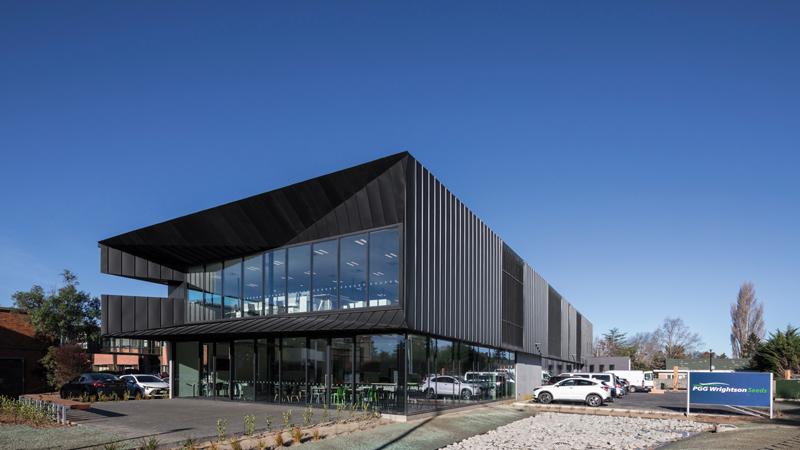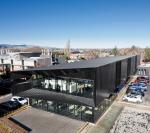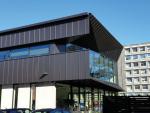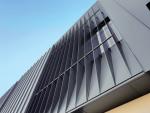Walker Architecture: Intelligent by Design

When Ngai Tahu approached Walker Architecture in Christchurch to design a new building for PGG Wrightson (one of their key tenants,) it represented both a remarkable opportunity and challenge for both architects and structural engineers.
PGG Wrightson Seed in Christchurch were in a temporary building in Hornby, after their previous building collapsed during the 6.2 magnitude earthquake on 22 February 2011. The earthquake was centred 6.7 kilometres south-east of the Christchurch city centre causing severe damage, especially in the central city and eastern suburbs.
Christchurch inhabitants were still reeling from the effect of the 7.1 magnitude earthquake on 4 September 2010, and buildings and infrastructure were already under pressure. The eastern suburbs were affected by significant liquefaction, producing approximately 400,000 tonnes of silt. This project was therefore an ideal opportunity to design a venue specifically purpose built to the needs of the occupant and local environment.
Walker Architects worked closely with PGG Wrightson Seeds and Ngai Tahu, site-owner, to create a tailor-made building on the south east corner of the Springs Road / Gerald street intersection in Lincoln. It is adjacent to the university and forms part of the AgResearch Centre campus.
The nature and shape of the site and the building platform dictated a building that had to be a long rectangle, two stories high. The architectural response provided a strong linear form parallel to the street (Springs road) boundary. The building envelope is deliberately exposed, simple and continuous, making the roof a seamless feature of the overall building. There are no penetrations from either the plant or venting on the roof with all the plumbing and ducting concealed in the soffits.
The contrasting external treatment of the two vertically stacked volumes reduces the visual weight of the building. The black upper storey seems in suspension over the light filled transparency of the base level. This sense of contrast is further accentuated by the smooth glazing in contrast to the textural quality provided by the standing seam cladding above.
On approach, the subtle complexities of the upper level unfold. The metal ribs of the exterior walls continue to the roof line accentuating a sense of the exterior architecture wrapping around the internal spaces. These fluid lines are virtually uninterrupted by roof penetrations and guide the eye up, over and down. With both ends fully glazed the unique facetted detailing leads the eye into the upper level of the building emphasizing its tubular form.
The roofing and finishing presented some interesting challenges to achieve the finish the design demanded. Collaboration with the roofers, builders and designers found a solution using ColorcoteⓇ Zinacore and Prefa Aluminium in the same Tarc Tray Single Lock Standing profile.
The design teams choice of completely contrasting colours, materials, and textures from the ground to the first floor provides further separation. Natural, smooth, sealed concrete panels and full height glazing to the ground floor complement the first-floor walls and roof in ColorcoteⓇ Lancewood with the standing seam providing texture.
Material
The main walls and roof are all clad with TARC TRAY Single Lock Standing Seam in ColorcoteⓇ Zinacore, Lancewood.
Because the Zinacore cladding was too difficult to facet in multiple directions, the feature walls on the first floor were clad in TARC TRAY Single Lock Standing Seam in Prefa P10 Black Aluminium.
The soffits are also clad in Tarc Clad Flat Lock in ColorcoteⓇ Zinacore, Lancewood and the rainscreen panels behind the fins are made from 2 mm aluminium Pe2 panels with a powder coat finish.




